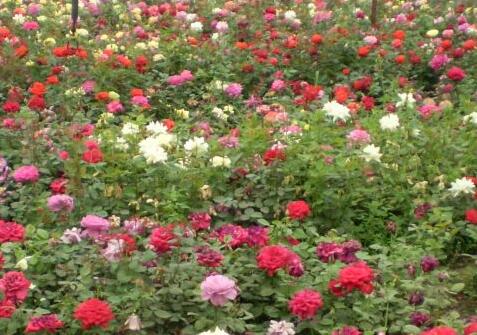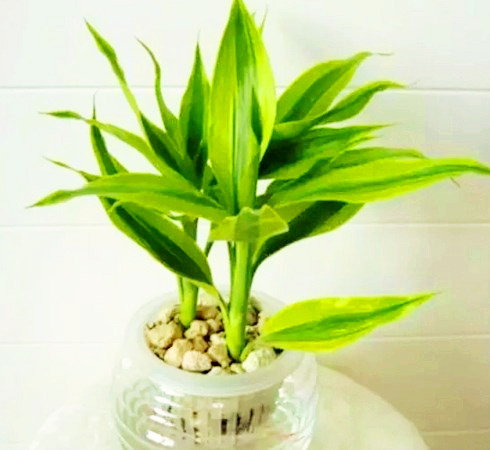"Wealth symbol" Copper money grass culture methods and matters needing attention are introduced!
Codonopsis lanceolata gets its name because its leaves are round and its size is similar to that of ancient copper coins, and it is regarded as a symbol of wealth in the folk, so it is loved by many people and wants to raise it at home. Then the editor will introduce to you the breeding methods and points for attention:

I. the culture method of Rabdosia angustifolia
1. Soil
In fact, Rabdosia angustifolia is a kind of plant that is well farmed, and the requirement for the soil is not high. Generally, it can grow even in barren soil, but it should be noted that it is not strong in drought resistance, so it is necessary to maintain the wettability of the soil. It is most suitable to grow in soils with loose and fertile soil, good water absorption and water retention. If the soil is still slightly acidic, it will grow faster. This kind of soil can be mixed with rotten leaves, river mud and garden soil at the ratio of 5:2:2.
2. Fertilization
The requirement of fertilizer for Rabdosia angustifolia planted in containers or potted plants is not high, it can be fertilized once in about 15-20 days, and the amount of fertilizer can be determined according to the size of flowerpots. In the vigorous growth period, it can be fertilized every 2-3 weeks.
3. Watering
It is the most important to provide water in the culture of Rabdosia angustifolia, because it likes to grow in a humid environment, especially in summer, because its leaves have a large amount of transpiration, so it is necessary to spray water regularly to maintain high air humidity. in addition, the leaves should be kept clean to facilitate photosynthesis. Watering in winter follows the principle that it is better to be wet than dry, but do not pour too much water to prevent stagnant water from causing rotting roots.
4. Temperature
Rabdosia angustifolia is not resistant to cold, it likes to live in warm and humid conditions, generally the most suitable temperature for the growth of Rabdosia angustifolia is 10-25 ℃, but the summer temperature can not be higher than 32 ℃, otherwise it will hinder its growth, the winter temperature can not be lower than 5 ℃ to avoid frostbite.
5. Lighting
Rabdosia angustifolia is suitable for growing in half-day and shady environment, can not be directly exposed to the sun, can not always be placed in a shady place, otherwise it is easy to cause plant leaves to rot, in addition, if you give it 4-6 hours of scattered light every day, it will make it grow better.
II. Matters needing attention in culturing Rabdosia angustifolia
1. The phenomenon of diseases and insect pests of Rabdosia angustifolia is very few, so there is no need to care deliberately, and it has a strong ability to adapt to growth. after a period of breeding, it will fill the whole container. at this time, we should pay attention to spraying water to its leaves to keep the leaves green and bright, and when the plants are dense, we should pay attention to ventilation and ventilation, otherwise the plants are prone to yellowing.
2. The leaves of Rabdosia angustifolia generally do not need a lot of pruning, but when the leaves are too dense, the withered bottom leaves, old leaves and diseased leaves should be removed in time to improve the light and ventilation conditions. when the basin is full of roots, attention should be paid to changing the basin and shaping the plants in time, if the plant growth is too high, it should be trimmed and pressed to promote the sprouting of new branches at the base of stems and leaves.
3. Generally, the pots for the cultivation of Rabdosia angustifolia do not need to be very large. When planting, pay attention to cover the rhizome so that it is better not to be seen, not too deep, and then put it in the semi-shade for a week or so and wait for the new leaves to grow up before placing in the sun.
4. If yellowing of new leaves is found in the process of breeding, compound fertilizer can be sprayed on the leaves, and nitrogen fertilizer can be used as the main fertilizer. at ordinary times, we should pay more attention to whether the water in the container is sufficient to prevent drying up.
5. Rabdosia angustifolia is suitable for growing in a warm and humid environment. In general, 80% of the sunshine is the best, such as insufficient light or excessive shading will lead to excessive stem growth, leaf yellowing and rot, and keep the soil moist.
Conclusion: the above is the introduction of the breeding methods and matters needing attention. I hope it will be helpful to the friends in need!
Time: 2019-03-13 Click:
- Prev

When is the best time to plant rose? Explain its planting method in detail!
Now many people only grow flowers at home, rose culture is the highest flower, that is because its florescence is relatively long, and a rose is very similar, elegant shape is very popular. So when is the best time to plant rose? Today, I would like to explain in detail the planting method of rose.
- Next

"Popular indoor plants" Fugui bamboo hydroponic cultivation methods and precautions introduced!
Bamboo is also known as Kaiyun bamboo, which has the symbolic meaning of good luck and great benefit, so it is very popular with people. It is a kind of indoor ornamental plant with high popularity. Bamboo can be cultivated in soil or hydroponic culture, but it is usually cultivated in water in family culture.
Related
- Fuxing push coffee new agricultural production and marketing class: lack of small-scale processing plants
- Jujube rice field leisure farm deep ploughing Yilan for five years to create a space for organic food and play
- Nongyu Farm-A trial of organic papaya for brave women with advanced technology
- Four points for attention in the prevention and control of diseases and insect pests of edible fungi
- How to add nutrient solution to Edible Fungi
- Is there any good way to control edible fungus mites?
- Open Inoculation Technology of Edible Fungi
- Is there any clever way to use fertilizer for edible fungus in winter?
- What agents are used to kill the pathogens of edible fungi in the mushroom shed?
- Rapid drying of Edible Fungi

